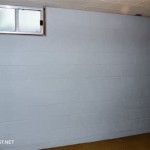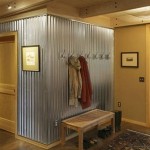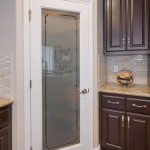Types of Interior Design Styles in 2024
Interior design styles are constantly evolving, reflecting societal trends, technological advancements, and shifting aesthetic preferences. Understanding the nuances of different design approaches allows individuals to create spaces that are both visually appealing and functionally effective. This article explores several key interior design styles prevalent in 2024, highlighting their characteristic features and potential applications.
Minimalism: Emphasizing Function and Clarity
Minimalism, as an interior design style, prioritizes simplicity, functionality, and the intentional use of space. It moves beyond mere austerity; rather, it focuses on carefully curated elements that serve a purpose. In 2024, minimalism continues to be a relevant style, particularly appreciated in urban dwellings and spaces where a sense of calm and order is desired.
A defining characteristic of minimalist interiors is the limited color palette. Neutral tones such as white, gray, beige, and black form the foundation, often accented with subtle pops of color in artwork or textiles. The emphasis on natural light is also paramount, with large windows and minimal window treatments preferred. Lighting fixtures are typically understated and functional, often integrated seamlessly into the architecture.
Furniture in a minimalist space is selected for its clean lines, simple forms, and practical use. Clutter is actively avoided, with storage solutions designed to conceal belongings. Materials like wood, concrete, and metal are commonly employed, chosen for their natural textures and durability. Minimalism in 2024 emphasizes sustainable and ethically sourced materials, aligning with a growing awareness of environmental responsibility.
Textiles used in minimalist design are often simple and natural, such as linen, cotton, or wool. Patterns are kept to a minimum, and any decorative elements are carefully considered for their contribution to the overall aesthetic. The goal is to create a space that is both visually calming and conducive to productivity and relaxation. Key to effective minimalism is the careful consideration of negative space – the areas left unoccupied – as these contribute as much to the design as the objects within the room.
Biophilic Design: Connecting with Nature Indoors
Biophilic design, deeply rooted in the innate human connection to nature, has gained significant traction in recent years, and 2024 sees its continued integration into residential and commercial spaces. This design philosophy seeks to incorporate natural elements into the built environment, promoting well-being and reducing stress.
The incorporation of natural light is a key component of biophilic design. Maximizing daylight exposure through expansive windows, skylights, and strategically placed artificial lighting that mimics natural light cycles is essential. Further, consideration is given to minimizing harsh glare and shadow, providing a comfortable and healthy light environment.
The use of natural materials like wood, stone, bamboo, and cork is another hallmark of biophilic interiors. These materials bring warmth and texture to the space, creating a tactile connection to the natural world. Living plants are also a central element, contributing to improved air quality and visual appeal. Vertical gardens, potted plants, and even strategically placed floral arrangements are common features.
Beyond tangible elements, biophilic design also considers the incorporation of natural patterns and forms. This can be achieved through the use of organic shapes in furniture and décor, patterns inspired by nature in textiles and wall coverings, and the inclusion of water features like small fountains or aquariums. Attention to air quality is also crucial, with ventilation systems designed to circulate fresh air and minimize pollutants.
Biophilic design extends to the auditory realm, with the incorporation of natural sounds like running water or birdsong to create a calming and restorative atmosphere. This creates a holistic sensory experience that promotes a sense of connection to nature and enhances overall well-being.
Eclectic Style: A Harmonious Blend of Influences
Eclectic interior design is characterized by the harmonious blending of different styles, periods, and textures to create a unique and personalized space. It is a design style that embraces individuality and creativity, while requiring a strong understanding of design principles to avoid a chaotic or disjointed result. In 2024, eclectic design continues to evolve, incorporating elements of sustainability and global influences.
Creating a cohesive eclectic space requires a deliberate approach to color. While there are no strict rules, a common color palette or a unifying accent color helps to tie together disparate elements. For example, a neutral backdrop can provide a canvas for showcasing colorful artwork, textiles, and furniture from different eras. Another approach is to use variations of a single color family throughout the space, creating a sense of visual harmony.
Texture plays a pivotal role in eclectic design, adding depth and dimension to the space. Combining smooth and rough textures, such as pairing a velvet sofa with a woven rug, creates visual interest and tactile appeal. Mixing materials like wood, metal, glass, and stone further enhances the textural richness. Incorporating vintage and antique pieces is a common characteristic of eclectic interiors. These items add character and history to the space, providing a counterpoint to more contemporary elements.
Pattern mixing is another key element of eclectic design, but it must be approached with caution. Combining patterns of different scales and styles can create a visually stimulating effect, but it is important to ensure that the patterns complement each other rather than clash. One technique is to use patterns from a similar color family or to mix geometric patterns with organic motifs.
Ultimately, successful eclectic style relies heavily on personal expression and careful editing. The goal is not simply to accumulate a collection of diverse objects, but rather to create a space that reflects the individual's personality and tells a story through its design. This requires a keen eye for detail and a willingness to experiment, while maintaining a sense of balance and proportion. Layering is the key to a well-executed eclectic design. Adding elements like paintings, sculptures, and throw blankets in a way that feels thoughtful and deliberate will make the space feel more curated and less cluttered.
Industrial Design: Embracing Raw Materials and Functionality
Industrial interior design draws inspiration from warehouses, factories, and other industrial spaces. It emphasizes raw materials, exposed architectural elements, and a focus on functionality. While it has been a popular style for several years, 2024 sees new interpretations that incorporate sustainable materials and softer, more livable elements.
Exposed brick walls are a quintessential element of industrial design, adding texture and character to the space. Concrete floors are another common feature, often left unpolished or sealed for a raw, unfinished look. Exposed pipes and ductwork are also celebrated as part of the aesthetic, rather than being concealed.
Metal is a dominant material in industrial design, appearing in furniture, lighting fixtures, and architectural details. Steel, iron, and copper are commonly used, often with a distressed or patinated finish. Wood is also incorporated, typically in its natural or reclaimed state, adding warmth and contrast to the metal elements.
Furniture in industrial spaces tends to be functional and utilitarian, with clean lines and minimal ornamentation. Leather sofas, metal chairs, and wooden tables are common choices. Lighting fixtures often take the form of pendant lights, sconces, and floor lamps with exposed bulbs and metal shades. These lighting elements contribute to the overall industrial aesthetic while providing ample illumination.
In contrast to the starkness often associated with industrial design, the 2024 iteration incorporates softer elements to create a more comfortable and inviting atmosphere. This may involve the use of textiles in warmer tones, the addition of plants to soften the hard edges, or the incorporation of vintage pieces to add character and personality. The goal is to create a space that is both visually striking and livable.
Coastal Style: Evoking a Sense of Serenity and Relaxation
Coastal interior design aims to recreate the atmosphere of a seaside retreat, characterized by light, airy spaces, a calming color palette, and natural materials. This style evokes a sense of serenity, relaxation, and connection to the ocean. In 2024, coastal design trends lean towards more sustainable materials and a focus on creating a tranquil and mindful environment.
A defining characteristic of coastal interiors is the use of light, natural colors. White, cream, beige, and pale blues are commonly used as the base colors, often accented with pops of brighter blues, greens, and corals. These colors create a sense of spaciousness and reflect the natural light, mimicking the atmosphere of a sun-drenched beach.
Natural materials like wood, rattan, seagrass, and linen are prevalent in coastal design. Wood flooring is often painted white or left natural, while rattan furniture and seagrass rugs add texture and warmth. Linen textiles are used for upholstery, curtains, and bedding, providing a soft and breathable feel.
Accessories play a key role in coastal design, with nautical-themed items adding a touch of whimsy and personality. Seashells, starfish, coral, and driftwood are commonly used to decorate shelves, tables, and walls. Artwork depicting seascapes, sailboats, or marine life further enhances the coastal theme.
Modern coastal design embraces minimalist principles and a focus on functionality. This involves decluttering the space, maximizing natural light, and incorporating sustainable materials. The goal is to create a serene and inviting environment that promotes relaxation and well-being. Large windows are essential to let in natural light and provide views of the surrounding environment. Window treatments are typically kept to a minimum, with sheer curtains or blinds that allow light to filter through while providing privacy.
Ultimately, the principles of interior design offer a diverse range of approaches, each capable of creating unique and inspiring environments. By understanding the key characteristics of these styles, individuals can create spaces that reflect their personal tastes and meet their specific needs.

Interior Design Styles 101 The Ultimate Guide To Decorating In 2025 Decorilla

Types Of Interior Design Styles Home Decor Trends 2024

12 Popular Types Of Interior Design Styles Barstool Comforts

Top Interior Design Trends To Look Out For In 2024 Liberty Blue Estate Agents Auctioneers Waterford

Interior Design Styles 101 The Ultimate Guide To Decorating In 2025 Decorilla

The Top Interior Trends Of 2024 With Graham And Green

Interior Design Styles 101 The Ultimate Guide To Decorating In 2025 Decorilla

Top 13 Interior Design Trends For 2024 Grace Monroe Home

15 Best Modern Interior Design Ideas Of 2025 Decorilla

Interior Design Styles 101 The Ultimate Guide To Decorating In 2025 Decorilla
Related Posts








